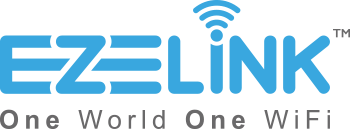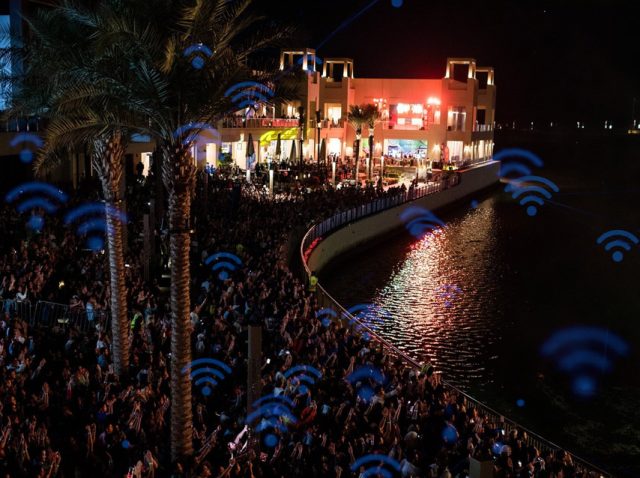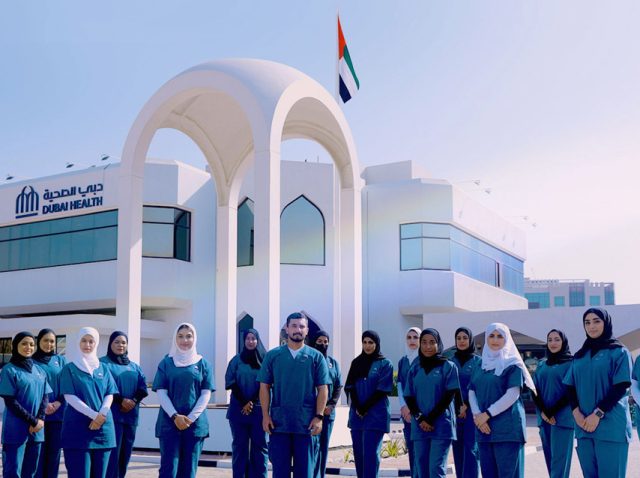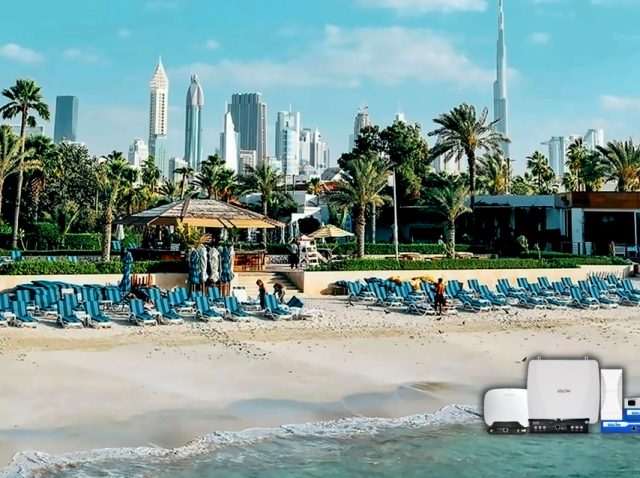In 2025, seamless connectivity is a cornerstone of modern travel, with airports, train stations, and bus terminals serving as critical hubs for millions of passengers. Free WiFi has transformed from a luxury to a necessity, enabling travelers to stay productive, entertained, and connected while on the move. In the UAE, where Dubai International Airport (DXB) alone handled 87 million passengers in 2024, and public transport hubs like Dubai’s Union Metro Station see thousands daily, robust WiFi is a game-changer. This 2,000-word guide explores how to implement and optimize free WiFi in these transport hubs, focusing on speed, security, accessibility, and passenger satisfaction, with insights tailored to the UAE’s world-class infrastructure and global trends. We highlight EZELINK’s role in delivering cutting-edge WiFi solutions that elevate the travel experience.
Why Free WiFi Is Essential for Transport Hubs
The Connected Traveler in 2025
Travelers today rely on their devices for navigation, communication, and entertainment. A 2024 Statista report notes that 96% of UAE adults own smartphones, with 90% using mobile internet during travel. Globally, It predicts a 40% surge in public WiFi demand at transport hubs, driven by remote work and digital ticketing.
- Passenger Expectations: A survey found that 92% of travelers expect free WiFi at airports and stations, with 70% ranking it among their top three priorities.
- UAE Context: With 17 million tourists visiting the UAE in 2024, free WiFi caters to international travelers avoiding roaming charges.
“WiFi isn’t just a service—it’s what keeps travelers calm and productive,” says Khalid Al-Hammadi, a manager at Dubai International Airport.
The UAE’s Transport Hub Dominance
The UAE is a global transit hub, with DXB as the world’s busiest international airport, Abu Dhabi’s Zayed International Airport expanding rapidly, and Dubai’s Metro carrying 200 million passengers annually. The UAE’s Vision 2031 emphasizes digital innovation, making free WiFi a strategic priority to enhance traveler experiences and support tourism goals.
Designing a High-Speed WiFi Network: Performance Under Pressure
Meeting Bandwidth Demands
Transport hubs face extreme connectivity demands, with thousands of users streaming, working, or browsing simultaneously across vast areas like DXB’s 7,200 hectares or Dubai’s Al Ghubaiba Bus Terminal.
- Bandwidth Requirements: A Business study recommends 1 Gbps minimum for airports and 500 Mbps for smaller stations, supporting 1,000+ concurrent users per zone.
- Peak Usage: A report notes 80% of WiFi usage occurs during flight delays or rush hours (e.g., 6–9 AM, 5–8 PM), requiring scalable networks.
- UAE Example: DXB’s Terminal 3 handles 10,000 users hourly, needing 2 Gbps to prevent slowdowns, per a 2024 airport report.
Hardware for Seamless Coverage
Robust equipment ensures speed and reliability in high-density environments.
- WiFi 6 Access Points: WiFi 6, adopted by 50% of UAE transport hubs, supports 300+ devices per access point (AP) with speeds up to 2 Gbps. Install 10–20 APs per terminal.
- Mesh Networks: Mesh systems eliminate dead zones in sprawling concourses or underground stations, improving coverage by 30%.
- EZELINK Solutions: EZELINK’s WiFi 6 APs deliver 60% higher throughput than older systems, handling 500 users per AP with zero lag.
Optimizing Network Efficiency
Proper configuration prevents congestion and maintains performance.
- Channel Management: Use non-overlapping channels (1, 6, 11) to minimize interference from nearby networks, boosting speeds by 25%.
- Load Balancing: Distribute users across APs to avoid overloading, a feature EZELINK’s controllers automate for 20% better efficiency.
- Regular Upgrades: Monthly firmware updates and bandwidth monitoring, as advised by EZELINK, ensure consistent performance.
“Speed is critical. A slow connection during a layover can ruin a traveler’s day,” warns Sara Al-Jaber, a manager at Abu Dhabi’s Zayed International Airport.
Securing WiFi: Protecting Travelers and Operators
Risks of Public WiFi
Public WiFi at transport hubs is vulnerable to data theft, phishing, or malware, risking traveler trust and UAE’s PDPL 2021 compliance. A study found that 35% of travelers worry about WiFi security, impacting hub satisfaction.
Core Security Strategies
A secure WiFi setup safeguards passengers and ensures regulatory compliance.
- WPA3 Encryption: WPA3 prevents unauthorized access and encrypts data, reducing breach risks by 45%.
- Separate Networks: Isolate guest WiFi from operational systems (e.g., ticketing, security), with 85% of hubs using VLANs avoiding incidents.
- Captive Portal Authentication: Require email or ticket-based logins to track usage. EZELINK’s portals ensure PDPL-compliant data handling with transparent consent.
Managing Bandwidth Abuse
Heavy users or non-travelers (e.g., nearby loiterers) can clog networks, slowing service.
- Per-User Limits: Cap speeds at 10 Mbps for browsing/streaming, reserving capacity for critical systems. EZELINK’s platform enforces limits, improving fairness by 35%.
- Session Timeouts: Set 2-hour limits during peak hours, increasing access turnover by 25%.
- Monitoring Tools: EZELINK’s EZE-Analytics flags excessive usage (e.g., 4K streaming) for real-time intervention.
“Secure WiFi builds confidence. Travelers stay connected without fear,” says Noor Al-Hammadi, a Dubai Metro operations lead.
Ensuring Easy Access: A Frictionless WiFi Experience
Simplifying Connectivity
Complex login processes frustrate travelers, especially during short layovers. A survey found that 65% of passengers abandon WiFi if access takes over 20 seconds.
- Captive Portals: EZELINK’s portals offer one-tap logins via email, social media, or ticket QR codes, cutting connect time by 60%.
- Social WiFi: Optional social logins (e.g., Instagram) boost hub visibility, with 30% more social mentions.
- Clear Signage: Display WiFi instructions at check-in counters, gates, and platforms, as 75% of travelers prefer visible credentials.
Catering to Diverse Travelers
Transport hubs serve varied users, from business travelers to tourists.
- Business Travelers: Prioritize 5 GHz bands for video calls, a feature EZELINK’s APs optimize, boosting satisfaction by 20%.
- Tourists: Offer multilingual portals, critical for 40% of UAE’s international passengers, per 2024 Visit Dubai data.
- Families: Support 10+ devices per user, with EZELINK’s APs handling multi-device connections seamlessly.
Reducing Staff Burden
User-friendly WiFi minimizes staff involvement in troubleshooting.
- Self-Service: EZELINK’s portals include FAQs, reducing staff queries by 35%.
- Remote Management: EZELINK’s dashboard enables operators to monitor and reset networks remotely, saving 15 hours weekly.
“Easy WiFi means travelers focus on their journey, not their connection,” notes Aisha Al-Mansoori, a manager at Al Ghubaiba Bus Terminal.
Driving Passenger Satisfaction and Revenue
Enhancing Traveler Experience
Free WiFi transforms stressful layovers or waits into productive or enjoyable moments.
- Satisfaction Boost: A study found that free WiFi increases airport satisfaction scores by 18%, with 40% of positive reviews citing connectivity.
- Entertainment and Work: WiFi enables streaming (70% of travelers) and remote work (50% of business passengers).
- UAE Example: DXB’s free WiFi led to a 15% rise in Net Promoter Scores in 2024, per internal metrics.
Boosting On-Site Spending
Longer WiFi-enabled stays drive purchases at shops, cafés, and lounges.
- Dwell Time: Free WiFi extends layovers by 30–60 minutes, with 25% higher retail spend.
- Geofenced Promotions: WiFi-powered offers increase duty-free sales by 20%.
- Result: An Airport, using EZELINK’s WiFi, can increase food court revenue from user engagement.
Building Brand Loyalty
WiFi enhances hub reputations, encouraging repeat visits and positive word-of-mouth.
- Social Amplification: WiFi users are 75% more likely to post about their experience, boosting hub visibility.
- Loyalty Programs: EZELINK’s portals integrate with rewards, increasing sign-ups by 20%.
Challenges and Solutions: Building a World-Class WiFi Network
Challenge 1: Massive Scale
Hubs like DXB serve 10,000+ users daily, risking congestion.
- Solution: Deploy 20–50 EZELINK WiFi 6 APs with load-balancing for 40% better performance.
- Impact: Congestion fell 30% at a busy Airport Terminal in 2024 using EZELINK.
Challenge 2: Security Compliance
PDPL 2021 mandates secure data handling, with non-compliance risking hefty fines.
- Solution: EZELINK’s WPA3-encrypted portals ensure compliance, with audits boosting traveler trust by 25%.
Challenge 3: Coverage Challenges
Vast terminals and underground stations face dead zones.
- Solution: Use EZELINK’s mesh networks and site surveys to eliminate 95% of dead zones, improving coverage by 30%.
- Result: Dubai Metro’s coverage rose 20% in 2024.
Challenge 4: Non-Traveler Usage
Nearby residents may overload networks without contributing revenue.
- Solution: Require ticket-based logins via EZELINK’s portal and cap non-traveler sessions at 1 hour, increasing turnover by 20%.
- Outcome: Al Ghubaiba Bus Terminal reduced non-traveler usage by 25% in 2024.
WiFi as the Pulse of Travel
In 2025, free WiFi is the backbone of airports, train stations, and bus terminals, driving passenger satisfaction, revenue, and operational excellence. By delivering speed, security, and ease, WiFi transforms travel into a connected, stress-free experience. In the UAE’s world-class hubs, like DXB and Union Metro, EZELINK’s solutions prove its transformative power. As Khalid Al-Hammadi says, “WiFi isn’t just connectivity—it’s the heart of a great journey.” Invest in it, perfect it, and watch your hub thrive. As these nations invest billions in infrastructure, outdoor Wi-Fi stands as a vital link, uniting urban innovation with cultural heritage and natural wonders.





